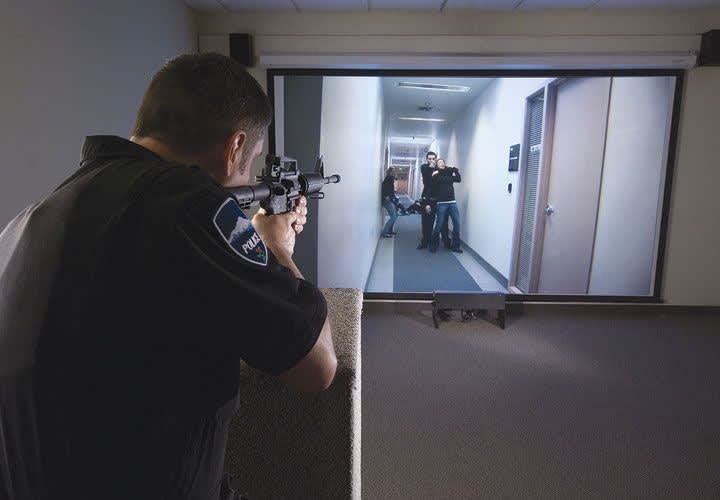Roman gladiator schools used simulation or scenario training, and every warrior class since has refined the technique. Most common in police training are role-playing scenarios, where volunteers - usually other cops - portray bad guys or victims while the trainee tries to resolve the instant dilemma. Role-playing is time- and personnel-intensive. You need a certain number of role-players multiplied by however many scenarios you will stage at once, plus props, plus a secure area to set up.
The "stage" is largely imagined because you don't have warehouses and highways and residential kitchens at your disposal in the training area, and there's usually a lot of standing around. Role-players also often go off script, so each trainee doesn't get the same training exposure and experience.
Video-based simulators use real-life environments, the actors never ad lib, and each scenario instantly resets as many times as desired. The precise location of each "hit" is recorded exactly, and the players continue to move, fall down, or otherwise react appropriately. The instructor has the ability to present the same scenario over and over, use different scenarios, or alter the circumstances of a single one to produce a different outcome and optimal response.
Now more than ever, "keeping it real" is a critical factor in training new recruits. This generation grew up with movies made entirely of lifelike computer-generated graphics (CGI), sometimes rendered in 3-D (Toy Story was 15 years ago). They have always had complex, multi-layered video games, often played on large format TVs or computer displays. Anything less than state of the art, and they're asking, "This the best you got?"
Picture and Sound












